

NAICA MINE, CAVE OF CRYSTAL GIANTS
What's the biggest crystal you've ever seen? Well, however large you thought it was, it's nothing compared to what a team of minors discovered near NCA in Chihuahua, Mexico.
In 1910, a cavern was found at a depth of 390 feet, which has become known as the cave of swords, and to their astonishment, it was full of gypsum crystals that were up to 3 feet 3 inches long. Then, 90 years later, another mining crew took things a step further when they drilled a new shaft and found the giant crystal cave, which itself was 980 feet beneath the surface. This cave had once been flooded with hot water, which allowed minerals to deposit in the crystalline structure.
The largest of the crystals to have been seen was 39 feet long, 13 feet wide, and thought to weigh as much as 55 tons, making it the largest one ever to have been found in the cave. Conditions in the cave aren't exactly inviting to people, though. With temperatures reaching 136 degrees Fahrenheit and 99% humidity, humans can only be in there for up to 10 minutes without full safety equipment.
Even if you were prepared for this, visiting the cave is impossible. Currently, after a robber tried to steal a crystal and ended up suffocating and dying, it was shut permanently and allowed to refill with water in the hope that the crystals can be preserved and continue to grow until improved methods of exploration become available.
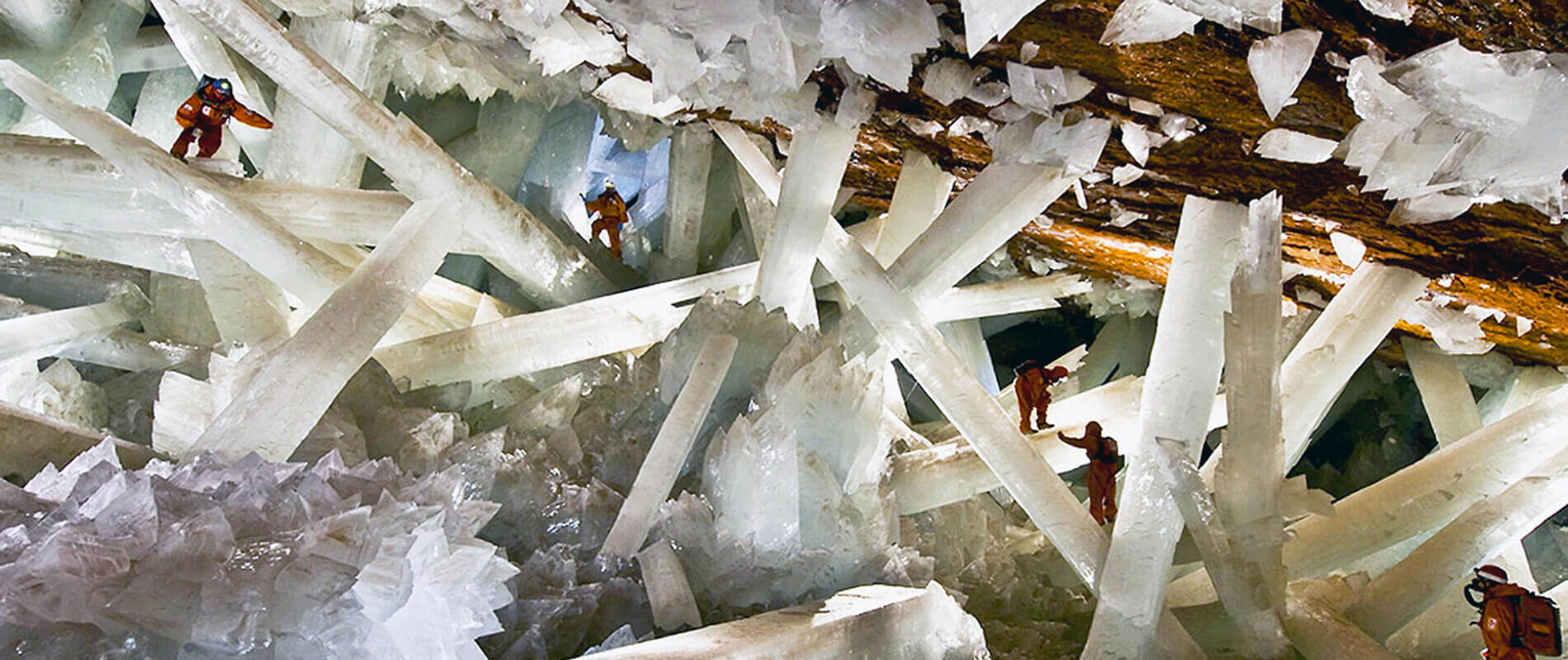
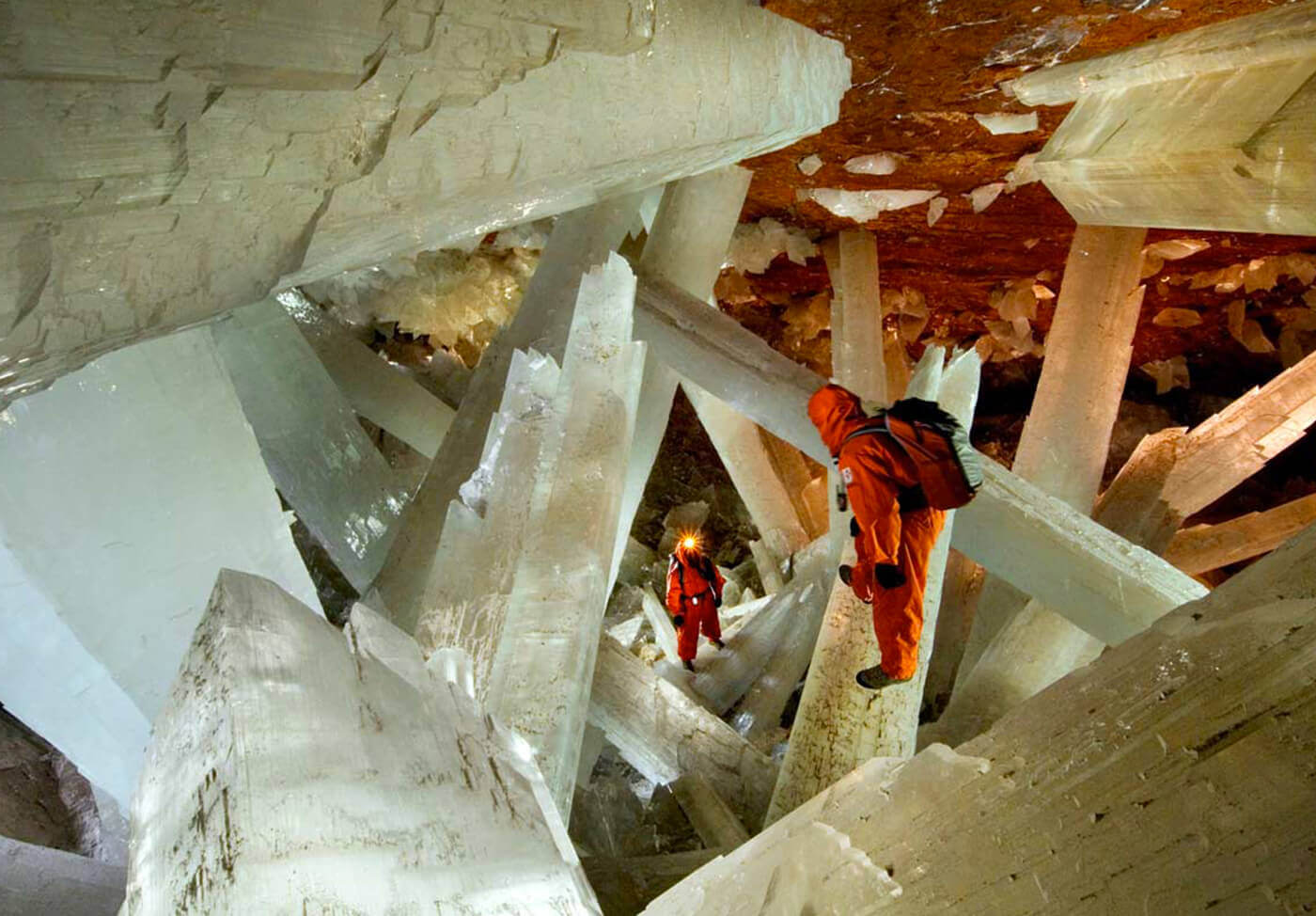 The Cave of Crystal Giants is one of the largest underground spectacles on our planet. It is a geological wonder located in the depths of the Mexican desert of Chihuahua, just close to the border of the United States of America.
The Cave of Crystal Giants is one of the largest underground spectacles on our planet. It is a geological wonder located in the depths of the Mexican desert of Chihuahua, just close to the border of the United States of America.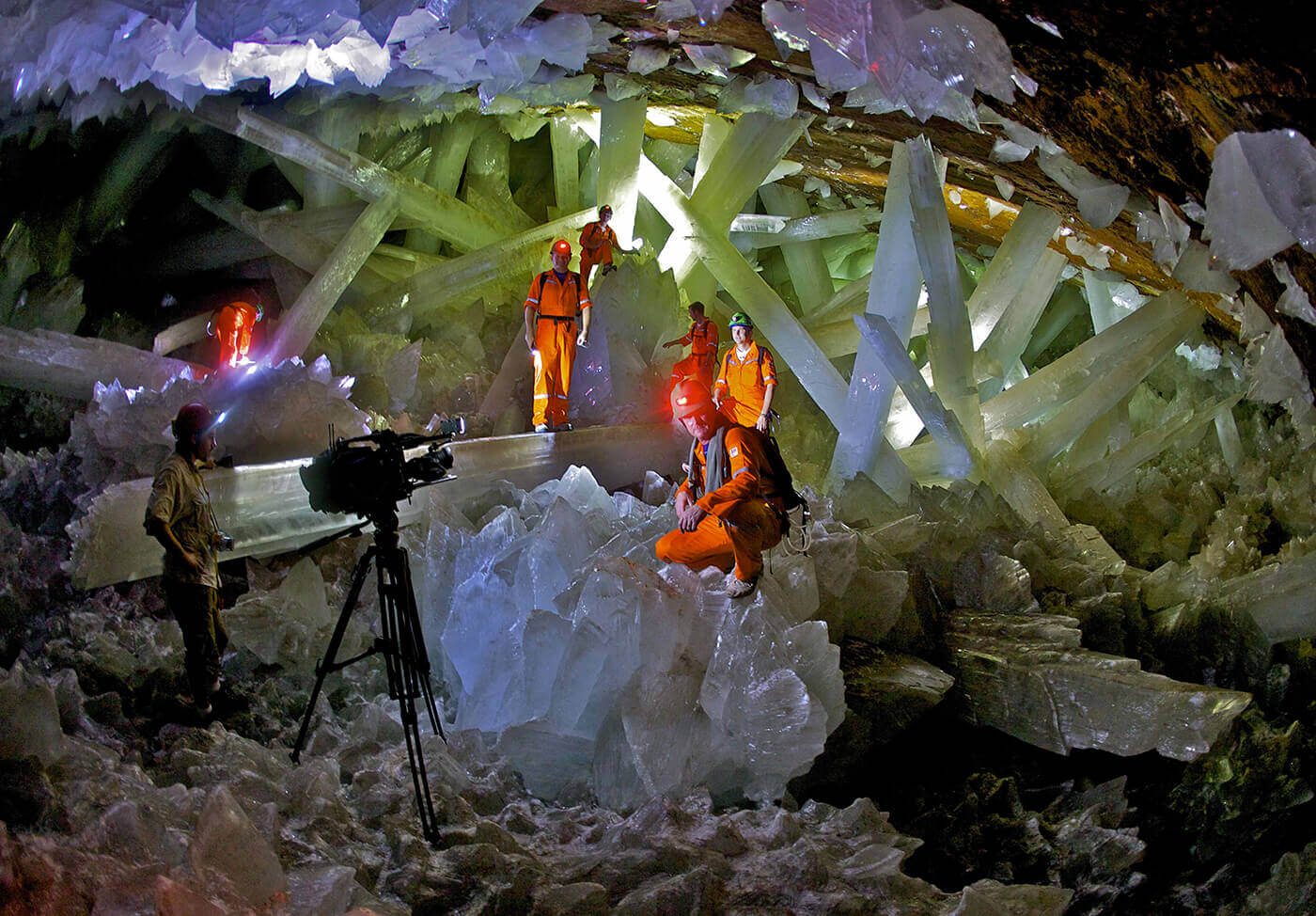 This lead, zinc and silver mine is completely covered in pure chalk crystals which reach a depth of 300 meters. It was only discovered in 2002 after the collapse of a cave wall and was then given the name of Cave of Crsytal Giants (Cueva de los Cristales).
This lead, zinc and silver mine is completely covered in pure chalk crystals which reach a depth of 300 meters. It was only discovered in 2002 after the collapse of a cave wall and was then given the name of Cave of Crsytal Giants (Cueva de los Cristales).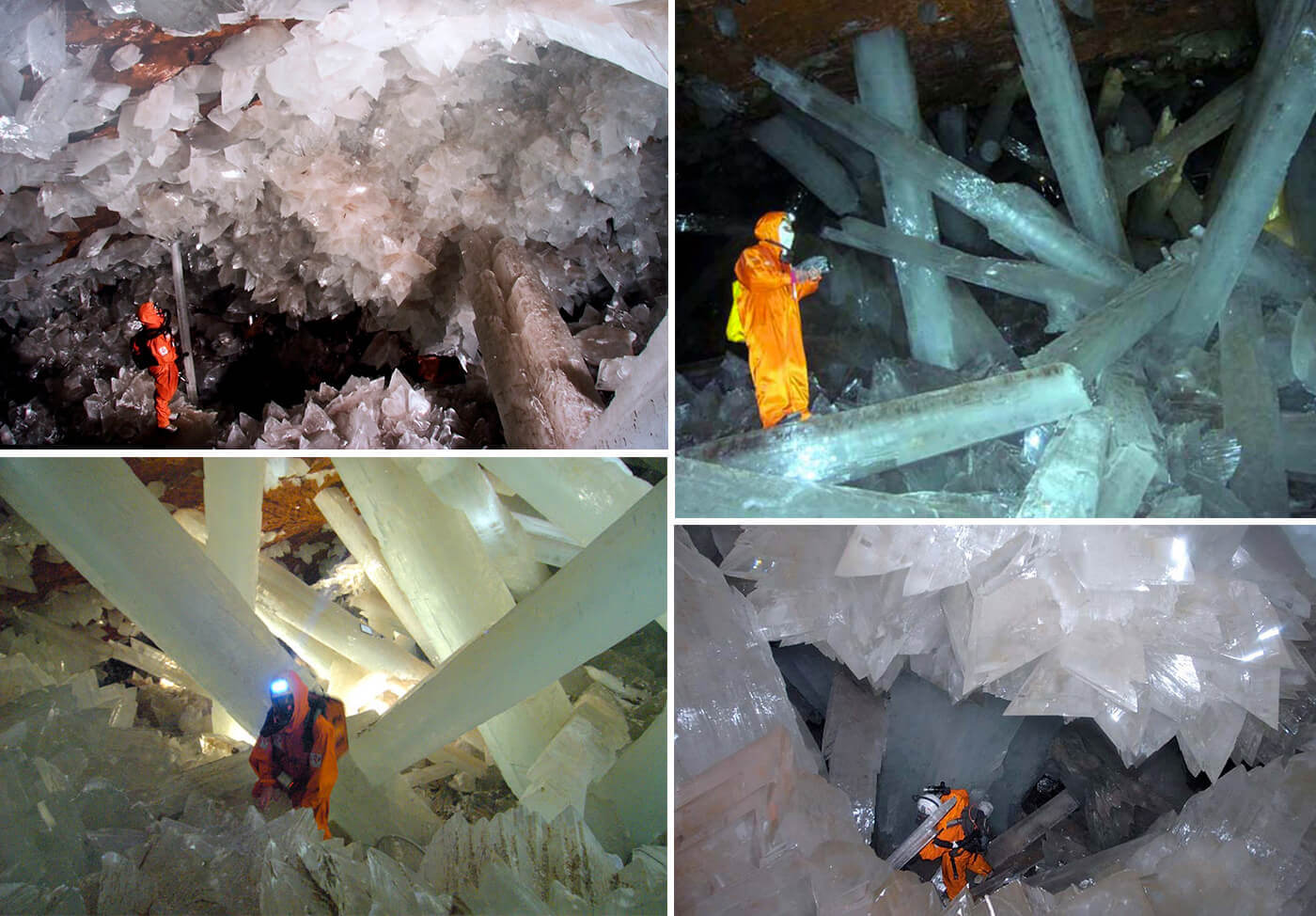 The cave contains the largest crystalline formations ever found on Earth, some of which weigh about 55 tons. These crystal formation can measure up to 15 meters in length and 2 meters in diameter and survive in an extreme environment with temperatures that range from 118°F to 140°F with a humidity of 100%. This inferno of heat is uninhabitable by man and those who work in the caves are made to wear special heat resistant suits equipped with respirators, very similar to space suits.
The cave contains the largest crystalline formations ever found on Earth, some of which weigh about 55 tons. These crystal formation can measure up to 15 meters in length and 2 meters in diameter and survive in an extreme environment with temperatures that range from 118°F to 140°F with a humidity of 100%. This inferno of heat is uninhabitable by man and those who work in the caves are made to wear special heat resistant suits equipped with respirators, very similar to space suits. The Naica Caves were considered a mystery for many years until Juan Manuel Garcia-Ruiz, a scientist from the University of Granada, explored its source. According to the calculations of the scholar, these structures formed due to the slow pace with which the material crystallizes and in a published scientific article from the "Proceedings of the National Academy of Sciences" he said: "The growth of the crystals is so slow that until now it was almost impossible to measure. We were able to study them thanks to a microscope we designed with the University of Sendai, Japan. This tool has allowed us to estimate that some of the crystals have grown over the course of a million years."
The Naica Caves were considered a mystery for many years until Juan Manuel Garcia-Ruiz, a scientist from the University of Granada, explored its source. According to the calculations of the scholar, these structures formed due to the slow pace with which the material crystallizes and in a published scientific article from the "Proceedings of the National Academy of Sciences" he said: "The growth of the crystals is so slow that until now it was almost impossible to measure. We were able to study them thanks to a microscope we designed with the University of Sendai, Japan. This tool has allowed us to estimate that some of the crystals have grown over the course of a million years."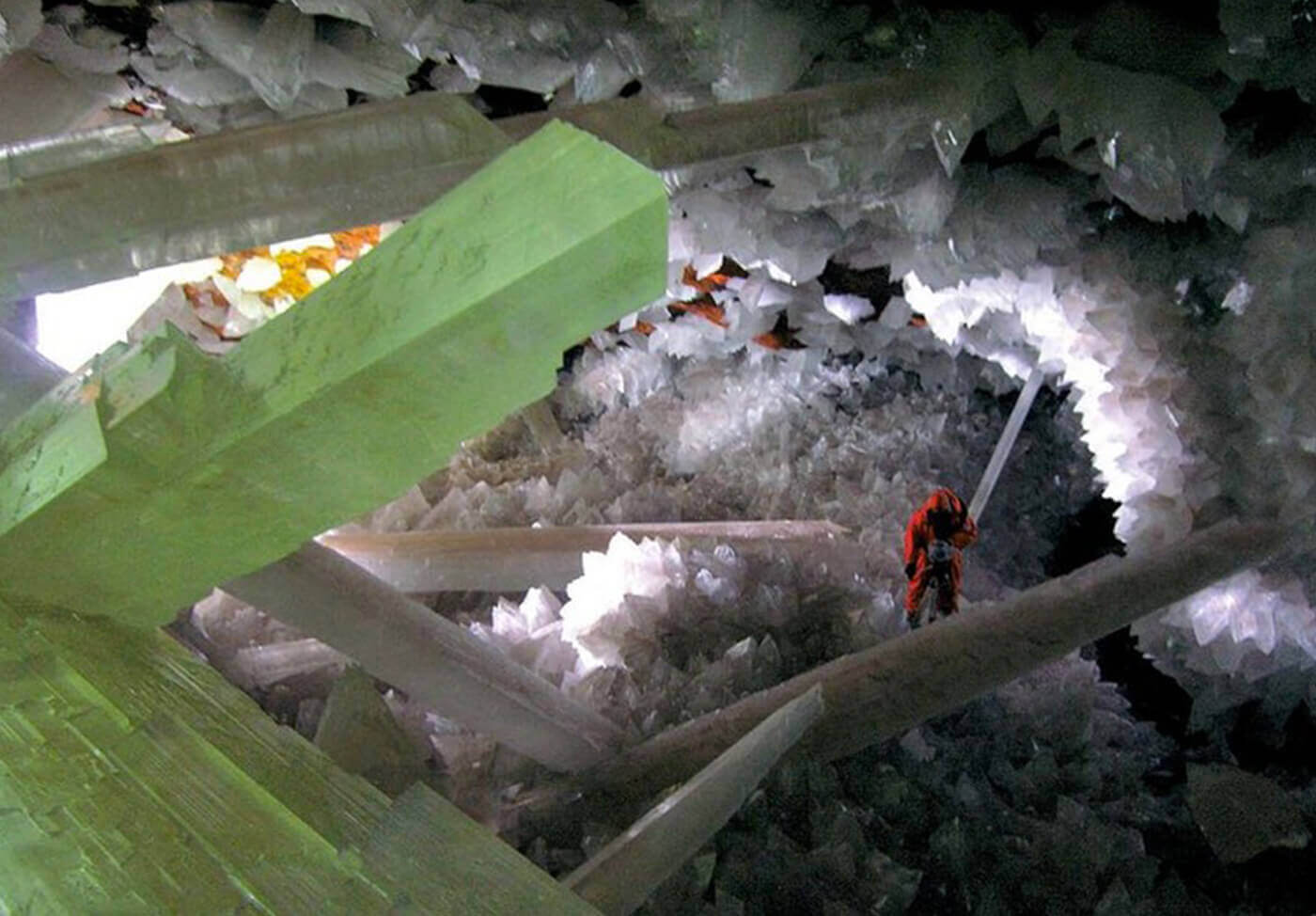 A recent study conducted by Penelope Boston, head of the Astrobiology Institute of NASA was presented during the annual meeting of the American Association for the Advancement of Science. The study revealed the discovery of certain microbes, and in particular bacteria which have been trapped inside the crystal formations for at least 50,000 years. These bacteria thrive on iron, sulfur and other chemicals that can live within extreme environmental conditions. This amazing discovery helps us reflect on the ability of life to adapt to even the most hostile of environments. The Naica Cave is certainly not a tourist destination, but its mysterious beauty allows us to understand the endless hidden possibilities of our planet.
A recent study conducted by Penelope Boston, head of the Astrobiology Institute of NASA was presented during the annual meeting of the American Association for the Advancement of Science. The study revealed the discovery of certain microbes, and in particular bacteria which have been trapped inside the crystal formations for at least 50,000 years. These bacteria thrive on iron, sulfur and other chemicals that can live within extreme environmental conditions. This amazing discovery helps us reflect on the ability of life to adapt to even the most hostile of environments. The Naica Cave is certainly not a tourist destination, but its mysterious beauty allows us to understand the endless hidden possibilities of our planet.
Recommended Videos
 The Banded Cotinga409 views
The Banded Cotinga409 views The snowy owl (Bubo scandiacus), also known as the polar owl, the white owl and the Arctic owl, is a large, white owl of the true owl family.2039 views
The snowy owl (Bubo scandiacus), also known as the polar owl, the white owl and the Arctic owl, is a large, white owl of the true owl family.2039 views-
Advertisements
 Photographer Captures The Beauty of Water Droplets By Macro Photos589 views
Photographer Captures The Beauty of Water Droplets By Macro Photos589 views The ribbon seal (Histriophoca fasciata)3805 views
The ribbon seal (Histriophoca fasciata)3805 views The Seafloor Has a Carpet – A Shark You Shouldn’t Step On384 views
The Seafloor Has a Carpet – A Shark You Shouldn’t Step On384 views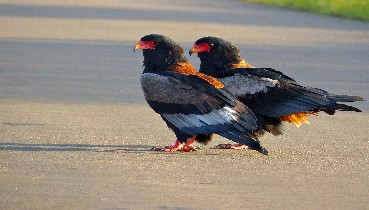 The bateleur (Terathopius ecaudatus)389 views
The bateleur (Terathopius ecaudatus)389 views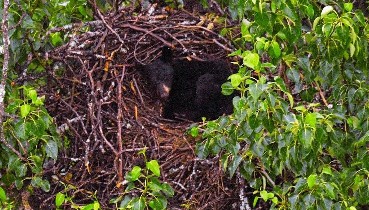 Black Bear Caught Taking a Nap Inside Giant Bald Eagle Nest in Alaska..3053 views
Black Bear Caught Taking a Nap Inside Giant Bald Eagle Nest in Alaska..3053 views TULIP GARDENS481 views
TULIP GARDENS481 views



